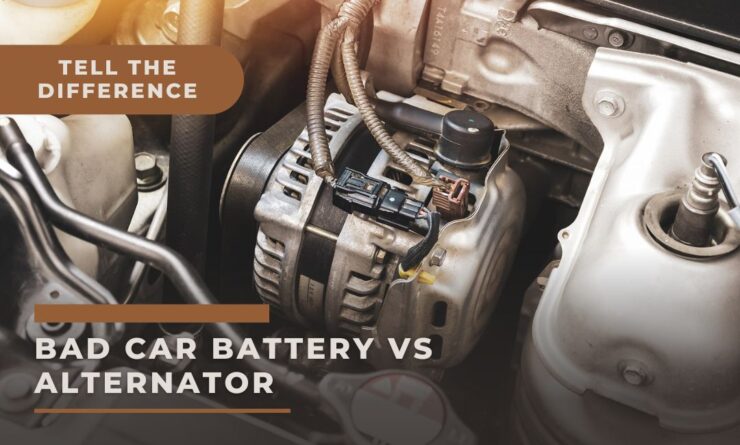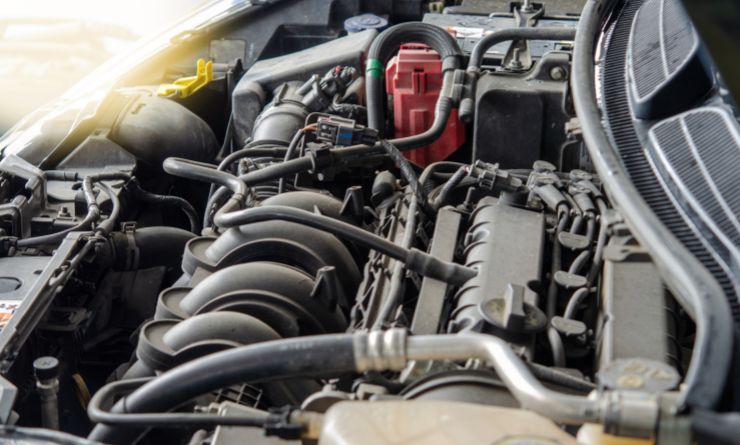Is your car experiencing troubles, but you’re not sure if it’s a bad battery or a failing alternator? These two components play crucial roles in your vehicle’s electrical system, and understanding their signs of failure can save you time and money. In this comprehensive guide, we’ll delve into the key signs of a bad car battery and a failing alternator, as well as equip you with the knowledge to distinguish between the two. So, let’s shed light on these essential aspects of car maintenance and ensure hassle-free driving!
Signs of a Bad Car Battery:
Engine Takes Too Long to Start:
One of the most common signs of a bad car battery is a slow cranking engine. If you turn the ignition key, but the engine takes too long to start or doesn’t come alive at all, it’s likely due to weak battery power.
Dim Headlights and Interior Lights:
Dim or flickering headlights and interior lights, even when the battery is fully charged, are clear indications of a deteriorating battery. These lights require a stable power supply, and a weakening battery may fail to deliver sufficient energy.
Frequent Jump-Starting:
Having to jump-start your car frequently points to a severely weakened or dead battery. If your vehicle consistently needs a jump-start, it’s time to consider replacing the battery.
Additional Subtle Clues:
In addition to the key signs mentioned above, there are other subtle indicators of a bad car battery. These include flickering dashboard lights or issues with electronic components like power windows or the radio. Don’t ignore these signs; take prompt action to avoid unexpected breakdowns.
Signs of a Failing Alternator:
Dim Headlights and Electrical Failures:
If you notice dim or flickering headlights while driving, it’s likely an alternator problem. The alternator’s role is to recharge the battery and power electrical components, so any issues can manifest in dim lights and other electrical failures.
Burning Rubber Smell:
A burning rubber smell, especially around the engine compartment, may indicate that the alternator’s bearings are worn out and overheating. This requires immediate attention as it can lead to severe damage.
Warning Lights and Strange Noises:
Illuminated warning lights on your dashboard, accompanied by strange noises like grinding or squealing, are strong indicators of a failing alternator. Such issues should be addressed promptly to prevent further damage.
How to Determine the Difference Between a Bad Battery and Failing Alternator:
To accurately identify whether the problem lies with the battery or the alternator, follow these steps:
Visual Inspection:
Check the battery for any leaks or corrosion. Also, inspect the alternator for loose connections or worn-out belts.
Voltage Test:
Use a multimeter to measure the battery voltage. A fully charged battery should read around 12.6 volts. Lower readings may indicate a weak or dead battery.
Headlights Test:
Turn on the headlights with the engine off. If they appear dim and get brighter when you rev the engine, the alternator might be the issue.
Monitor Electrical Accessories:
Observe the functioning of other electrical components like lights, power windows, and the radio. Flickering lights or slow power window operation could signify an alternator problem.
Jump-Start Test:
If your car won’t start, try jump-starting it. If it starts but dies shortly after ignition, the alternator is likely at fault.
Consulting a Professional Mechanic:
If you’re still unsure about the problem, it’s best to take your car to a professional mechanic who can conduct more precise tests and provide accurate diagnosis and repairs.
FAQs
How can I tell if my car battery is bad or if it’s the alternator?
Signs of a bad battery include slow cranking or starting, dimming headlights when idling, and a clicking sound when turning the key. Signs of a bad alternator include a dead battery even after jumpstarting, dashboard warning lights, and electrical failures.
Can a bad battery damage your alternator?
Yes, a bad or old battery can cause an alternator to work harder than usual, which can lead to premature failure. It’s important to replace a failing battery before it causes damage to other parts of the car.
How long does last?
Alt can last between 80,000 to 150,000 miles, depending on various factors such as driving habits and quality of the part. Regular maintenance and inspections can help prolong the lifespan of the alternator.
What should I do if my car won’t start?
If your car won’t start, it’s important to first check the battery connections and make sure they are clean and tight. If the battery appears to be working properly, it could be an issue with the alternator or starter and may require professional diagnosis and repairs.
Can I drive my car with a bad alternator?
No, driving with a bad alternator can lead to a completely dead battery and electrical failures while on the road. It’s important to address any issues with the alternator as soon as possible to avoid further damage to the vehicle.
How much does it cost to replace an alternator or battery?
The cost to replace an alternator or battery can vary depending on the make and model of the vehicle, as well as labor costs. Generally, a battery replacement can cost between $50 to $200, while an alternator replacement can cost between $500 to $1,000.
Conclusion
Identifying if your car has a bad battery or alternator can be tricky. But, if you look out for key signs, you can tell the difference. If your car takes multiple attempts to start, or your headlights dim when other electronics are used, this could mean your battery is weak.
Flickering or dimming lights while driving? This might point to an issue with the alternator. It charges the battery while the engine is running; if it doesn’t work, the battery power will decrease. You could also experience stalling and difficulty idling at stoplights. Use a multimeter to measure voltage levels.
With the engine off and key out of ignition, connect the positive lead to the positive terminal of the battery and negative lead to the negative terminal. A healthy battery should read 12 volts. When the engine is on, the voltage should be 13-14 volts – if the alternator is working correctly. Remember: Regular servicing and timely replacements of both the battery and alternator are key to preventing breakdowns and keeping your car running smoothly.
















